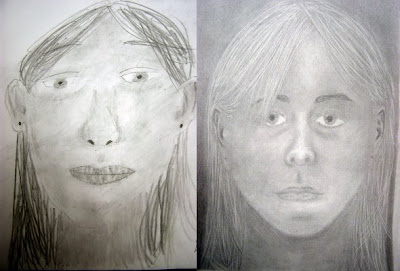 Above left is a pre-instructional drawing done the first week of class. To the right is the "Final Exam" of the same student at the end of the semester!
Above left is a pre-instructional drawing done the first week of class. To the right is the "Final Exam" of the same student at the end of the semester!You don’t need to know how to draw already- the whole point of this class is to teach you how to draw. This course is recommended for any student intending to take any other art courses. Emphasis will be placed on brain research and visual thinking modes. All students must have this course or Art Fundamentals prior to any other art course.
 I swear by my textbook Drawing on the Right Side of the Brain; a course in enhancing creativity and artistic confidence by Betty Edwards, © 1999 Tharcher/Putnam.
I swear by my textbook Drawing on the Right Side of the Brain; a course in enhancing creativity and artistic confidence by Betty Edwards, © 1999 Tharcher/Putnam. I've been using it since 1994 (an earlier edition). Dr. Edwards has compiled decades of brain research and art education together in perhaps the most acclaimed book learning how to see differently and therefore be able to draw. Students acquire five perceptual skills that make up the global (holistic) skill of drawing. A major key to learning to draw is understanding how brain lateralization effects one's ability to perceive accurately and successfully record those perceptions.
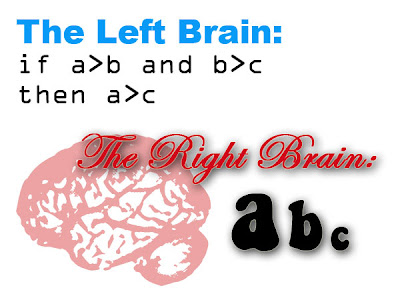
 Students begin by learning how important line is to expression. Even your signature is a communicative work of art.
Students begin by learning how important line is to expression. Even your signature is a communicative work of art.
 Students try a variety of exercises for bypassing their preconceptions and their dominant verbal left-brains, including copying this Picasso drawing upside down.
Students try a variety of exercises for bypassing their preconceptions and their dominant verbal left-brains, including copying this Picasso drawing upside down.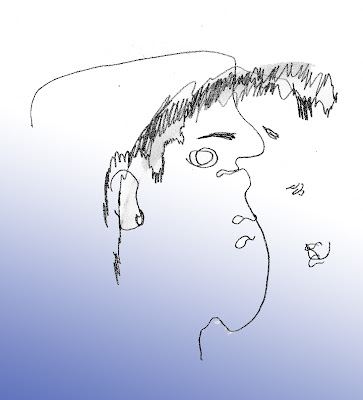 "Blind" or "Pure" Contour line drawing forces the student to focus on the edges of an object, without worrying about the placement or proportion of the whole.
"Blind" or "Pure" Contour line drawing forces the student to focus on the edges of an object, without worrying about the placement or proportion of the whole.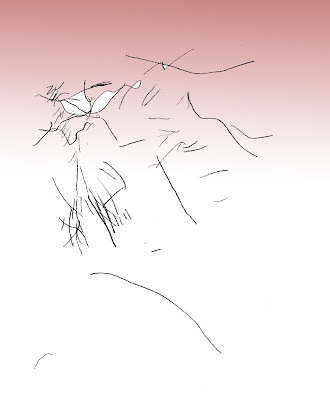
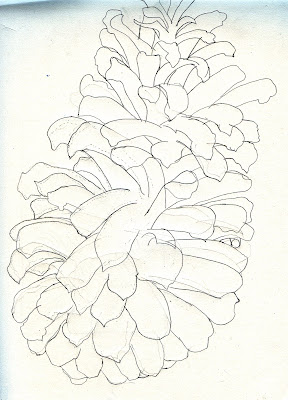 Then, they hone their new contour line drawing skills
Then, they hone their new contour line drawing skills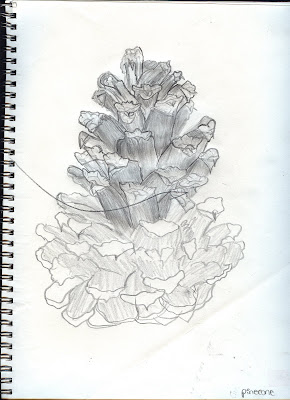
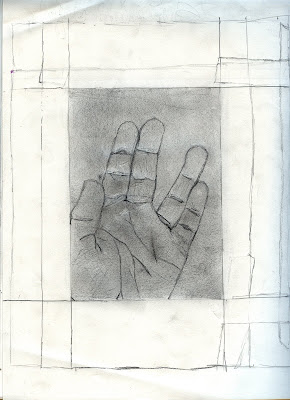 One of the three benchmarks of the class are drawing hands. In order to do so, students learn about the artist's concepts of a "picture plane" onto which they "flatten" anything they're looking at, and a "picture frame" which helps select a stronger composition.
One of the three benchmarks of the class are drawing hands. In order to do so, students learn about the artist's concepts of a "picture plane" onto which they "flatten" anything they're looking at, and a "picture frame" which helps select a stronger composition.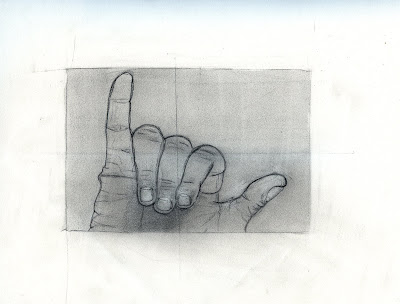
 Next, students are challenged to see the space around objects as a real and vital element- both because it improves composition and because "negative spaces" share edges with the positive forms anyway.
Next, students are challenged to see the space around objects as a real and vital element- both because it improves composition and because "negative spaces" share edges with the positive forms anyway.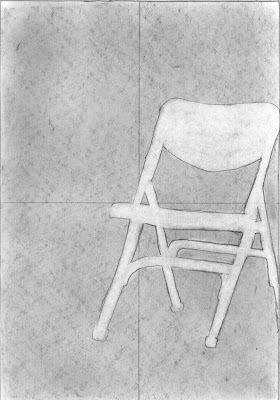
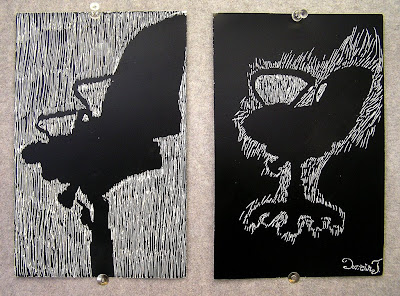
 Mastering negative space as well as some more important artist concepts like "basic units" and sighting sizes and angles prepares students for the second major benchmark of the class, drawing chairs.
Mastering negative space as well as some more important artist concepts like "basic units" and sighting sizes and angles prepares students for the second major benchmark of the class, drawing chairs.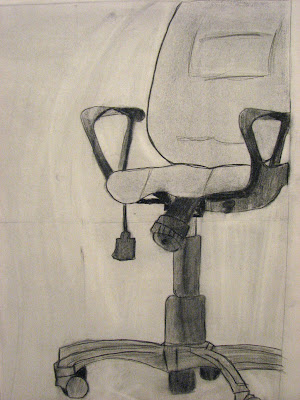
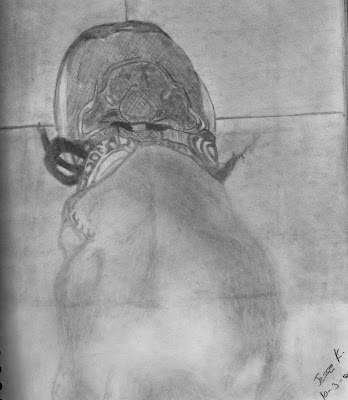
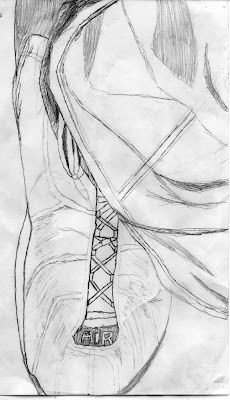 Students learn that with sighting and their imaginary picture-planes, informal perspective can become easier and more effective than traditional linear perspective.
Students learn that with sighting and their imaginary picture-planes, informal perspective can become easier and more effective than traditional linear perspective.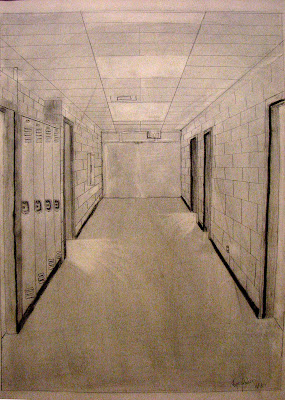
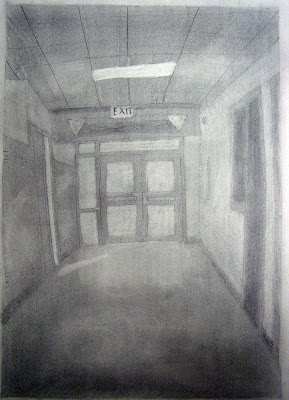
 Finally, students examine skeletal structure and learn the basic placement guidelines for drawing portraits, bringing them to their third and most important benchmark; faces.
Finally, students examine skeletal structure and learn the basic placement guidelines for drawing portraits, bringing them to their third and most important benchmark; faces.
Senior Portfolio and Advanced Drawing students learn about drawing figures, including skeletal studies and gesture sketching, then they are able to choose their own subjects and often demonstrate a mastery of the five perceptual skills as well as composition.
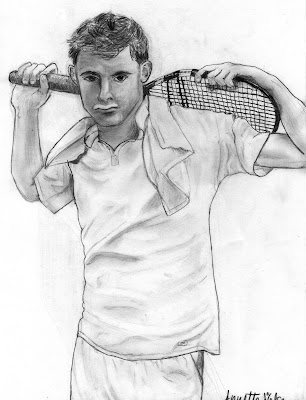
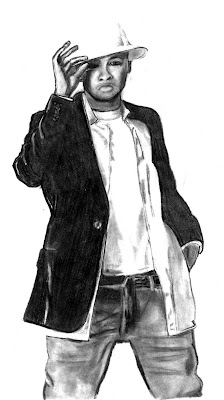
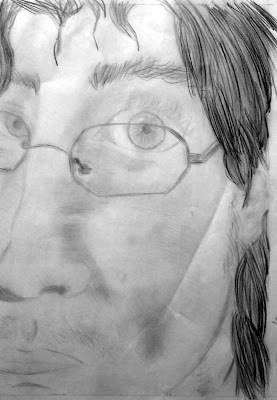
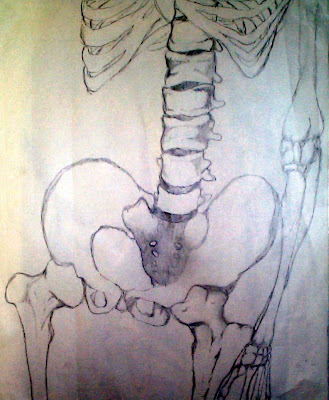




 follow me on twitter
follow me on twitter follow me on facebook
follow me on facebook

No comments:
Post a Comment